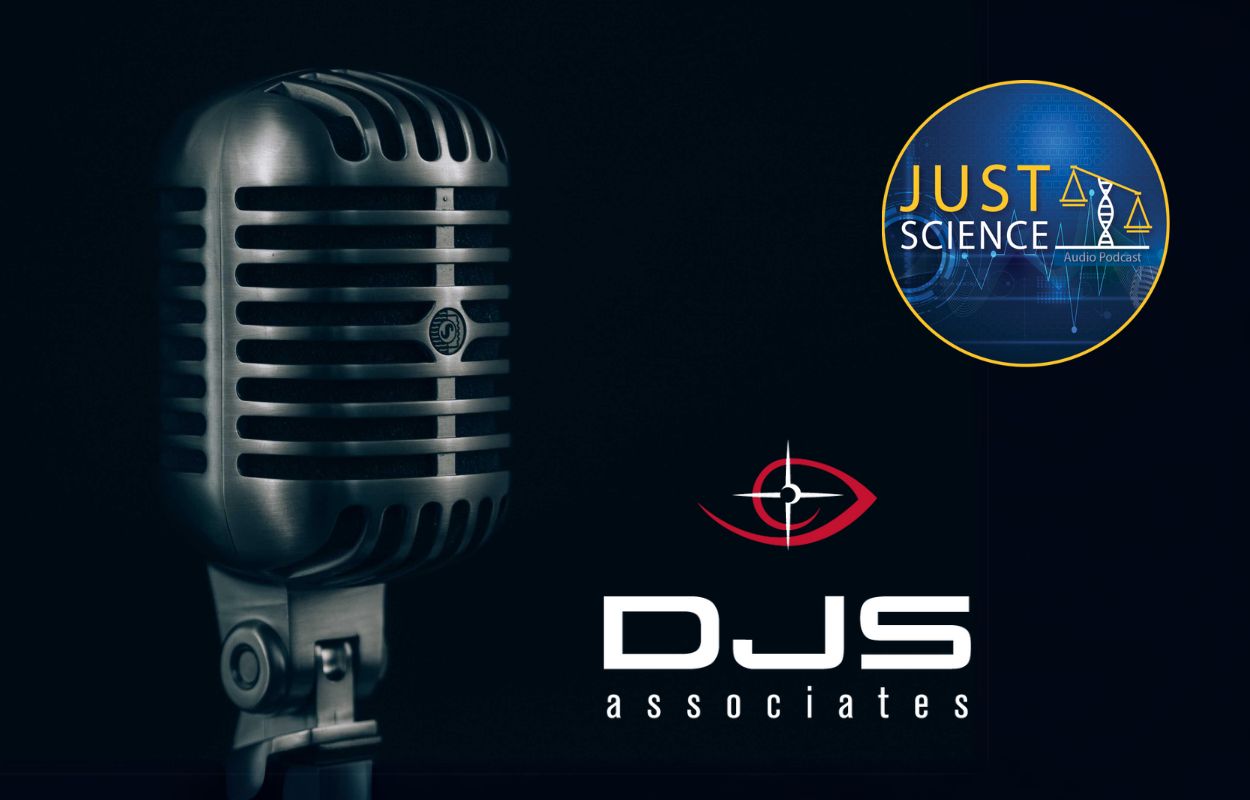Just Science Podcast: Forensics in the Digital Age

Justin P. Schorr, Ph.D., Principal Collision Reconstruction Engineer, and Timothy R. Primrose, Mobile Forensic Analyst
Justin P. Schorr, Ph.D., Principal Collision Reconstruction Engineer, and Timothy R. Primrose, Mobile Forensic Analyst, co-hosted an episode of the Just Science podcast Case Studies season. Justin and Tim joined Jaclynn McKay, Forensic Scientist with RTI International, to discuss the utilization of digital evidence in real-world cases.
In the digital age, forensic technology has broad applications for investigations. From cell phone, social media account, and car infotainment system data to three-dimensional modeling for crime scene reconstruction, technology is becoming a staple in forensics. Justin and Tim describe what kinds of digital evidence is applicable to investigations, the limitations and court considerations for forensic technology, and case examples on how mobile forensics and reconstruction simulations are effectively used to further investigations.
Addressing the critical role of digital evidence in modern forensic investigations, Justin frames the concept from his perspective as a collision reconstruction engineer. “Physical evidence is the lifeblood of what I do as an engineer. Collision reconstruction can be accurately defined as application of the laws of physics to the physical evidence.” A lack of physical evidence can pose significant challenges; however, the field of collision reconstruction has adapted to the advent of new technologies that are increasingly common in newer vehicle models. Digital forensics can assist collision reconstruction by supplementing physical evidence with data from infotainment systems. “If you have a touchscreen in your vehicle and you’ve paired your phone with that touchscreen, essentially everything you’ve ever done on your phone is now somewhere in your car.”
Tim then elaborates, “we do collect a lot of data from infotainment systems and there’s just an abundance of cell phone data that’s there, whether it’s call logs, text messages, even the contact list. And essentially anything that you’re doing on your phone while you’re in the car driving.”
Whether a person pairs their cell phone to a vehicle via Bluetooth, USB, or Apple CarPlay, once they have granted the infotainment system permission to connect to the device, mass amounts of data are downloaded from the device and stored within the vehicle. Justin points out that these datasets will even include information that is seemingly irrelevant to the operation of a vehicle, such as calendar appointments. This concept is particularly concerning from a privacy standpoint. For example, consider the number of drivers who may have paired their devices to a rental car, unknowingly allowing a copy of their digital footprint to be preserved in that vehicle indefinitely. A single rental car could contain data from dozens of previous drivers. Justin explains that, in order to download infotainment data, “the person that has to sign consent for you to do a download of the vehicle is the owner of the vehicle. If it’s a rental vehicle, you don’t own the vehicle. So, your data is now on a vehicle that you don’t own, that somebody else has the gatekeeper control over whether or not, you know, the data is accessible, should it be in a crash or something along those lines.”
While the concerns over data privacy are valid, experts like Justin and Tim are able to utilize data downloaded from a vehicle’s infotainment system to their advantage when faced with obstacles obtaining physical evidence or accessing a device, for both collision reconstructions and digital forensic investigations. From Justin’s standpoint, this data can assist when a case involves a crash that occurred years ago, when “there’s no photographs and the police didn’t document anything at the scene because it was just a fender bender.”
In relation to mobile forensics, Tim advises how the digital copy of cell phone data stored in a vehicle can help overcome dilemmas surrounding spoilation. A person may delete messages or photos from their device; however, “if you’ve paired your phone with a vehicle, that is a way that we can actually access data that you’ve deleted from your phone because sometimes that will still be on the vehicle. People think that if they delete their device from the device list of a rental vehicle, that gets rid of [their information.] It doesn’t get rid of anything other than the pairing of your phone in the vehicle.”
Episode 5: Just Forensics in the Digital Age, released on November 3, 2023, is available on Spotify. Visit the Just Science episode page for a full list of links to listen on other audio streaming platforms.
DJS Associates, Inc., can be reached via email at experts@forensicdjs.com/ or via phone at 215-659-2010.
Categories: Collision Reconstruction | Justin P. Schorr, Ph.D. | Mobile Forensics | Timothy R. PrimroseTags: Cell Phone | Data Extraction | Data Recovery | Device Data | Digital Evidence | Infotainment | Spoilation


